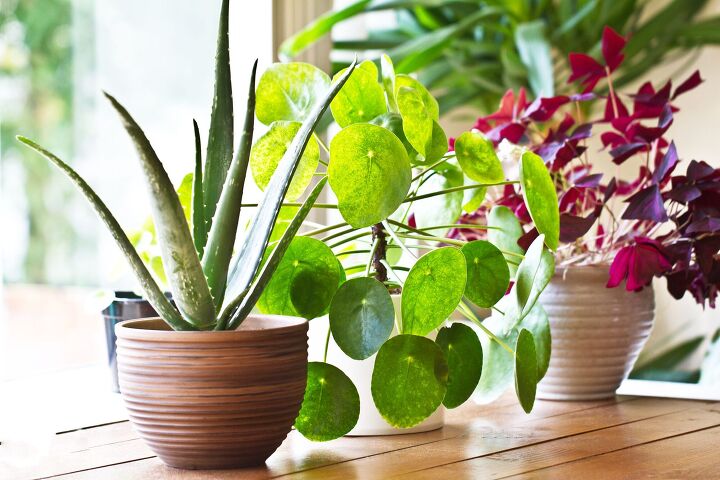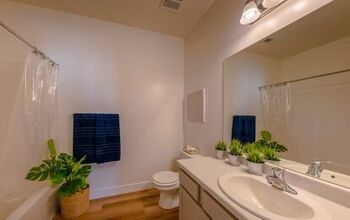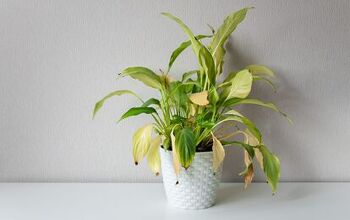How To Make Indoor Plants Grow Faster

Whether you simply love gardening or want to reap the benefits of indoor plants, adding greenery to your space is a popular design choice. But if you’re starting from scratch, you might want some ideas on how to make indoor plants grow faster. After all, nobody likes waiting, so if you can speed up the process, you’re all for it.
To help indoor plants grow faster, ensure they get enough bright light and monitor their moisture levels. As plants grow, transfer them to larger containers, prune them when necessary, and feed them appropriately. Research the best care practices for your houseplants, so you know which things they need (and which they don’t).
Even if you don’t consider yourself to have a green thumb, with some helpful tips, your indoor plants can thrive.
Five Easy Tips For Faster-Growing Indoor Plants
Are you ready to wow all your friends with your impressive plant-growing skills? Check out these easy and helpful tips for making indoor plants grow faster.
1. Provide Bright Light To Your Indoor Plants
The popular formula for helping plants grow is sunlight, dirt, and water, but various plants require different amounts of light. However, even if you have plants that can grow in low light, this doesn’t mean they wouldn’t love some more sun exposure.
Low-light plants simply have the ability to grow when there isn’t a lot of bright light. But these plants still love some time in the light, and more bright light will help them grow faster.
Therefore, be thoughtful about where you position your indoor plants. Some plants thrive on window sills or other locations that give them a healthy dose of bright light daily. Many houseplants love the light that shines through windows facing east or west. On the contrary, south-facing windows tend to be too intense.
If your indoor plant grows slowly, reposition it to a place with more sunlight. Watch your plants closely. Too much sun can still be detrimental to some plants. If the leaves are browning, filter the sun using sheer curtains or something similar.
Another possibility is to try artificial LED plant lamps that can provide the necessary amount of light to your plants when they need it. Many of these plants have special features like moveable heads and timers so you can adjust each lamp to specific plants. For some plants, artificial plant lights might be even more favorable than sunlight, so get to know your plants.
2. Give Your Indoor Plants Enough Water
If your indoor plants seem to droop, have yellowing leaves, and aren’t growing well, they likely have inadequate moisture levels. Similar to their light needs, different plants also require various amounts of water.
It’s essential to read your plant’s care guide to determine how much water it needs to thrive. But, overall, there are a few general tips to keep in mind.
- Check the plant’s soil to ensure it’s moist. Never let it dry completely.
- When your plants are actively growing (usually in warmer weather in late spring and summer), they’ll need more water. Adjust your water levels throughout the year based on your plant’s growth. If you use artificial light, your plants may need the same amount of water all year.
- Add a little humidity to the air around your plants. Mist them with a spray bottle or use a humidifier or humidity trays. If you live in a very dry area, you’ll need to provide more humidity and water to your plants.
3. Prune Plants To Help Them Thrive
It might seem counterintuitive to cut your plants to help them grow. However, many pants need some pruning to thrive. Depending on the plant, you may need to cut dying blooms entirely, a process called deadheading. Deadheading encourages new, healthy flowers to grow.
Prune your plants when they are actively growing, especially if they have unhealthy branches or are losing their shape. Avoid getting super aggressive. Cut stems above where a leaf attaches to the stem or a junction to another branch.
Some plants require more pruning than others. Make sure to know your plant and how best to care for it. Don’t blindly start snipping and cutting back stems and blooms until you have nothing left. If you’re new to pruning, proceed cautiously and do a little bit at a time as you get to know your plant.
4. Feed Your Plants
Don’t forget to fertilize your plants so they get all the nutrients they need. How much you need to fertilize your plants depends on their specific care guidelines. Therefore, consult your plant’s care instructions for specific amounts, timing, etc.
Generally, the best time to start fertilizing indoor plants is in early spring, before new growth begins. Use a houseplant fertilizer that you’ll typically need to dilute. A common schedule for fertilizing indoor plants is once a month, but some plants do better with twice a month.
If your plant doesn’t grow during the winter, don’t feed it. However, if you grow your plants under artificial lamps, continue the same care year-round.
5. Make Sure Plants Have Room To Grow
A big mistake many people make when attempting to grow houseplants is leaving them in their original containers. However, as your plants grow, their root systems also get bigger, which means they’re outgrowing their home.
Keep an eye on your plants as they grow and check for signs that they need to upgrade to a larger pot. Potential signs are the roots growing through the bottom of the container or your plant popping out of the pot. It pops up when the roots get so large they push the plant up through the soil.
If the container is too small for your plant, growth will slow or stop altogether. Your plant might also become top-heavy and fall over, or you may notice the soil is always dry no matter how much you water it.
If you decide to repot your plant, do so in the spring before new growth. Get a container that is roughly 2 inches larger in diameter than the current container. But check your plant’s care guide. Certain larger plants may do better with a pot 4 inches larger.
What Liquid Helps Plants Grow Faster?
Watering your indoor plants with a bit of club soda could encourage faster growth. Remember your fifth-grade science class when you learned all about photosynthesis? Plants use sunlight, water, chlorophyll, and carbon dioxide to make their own food and create oxygen.
Club soda, or carbonated water, contains a variety of macronutrients, including carbon, potassium, hydrogen, and more. These nutrients are vital for plant growth, so giving your plants some club soda can give them a boost.
Make sure you don’t use sweetened carbonated water. The sugar not only attracts pests, but it can throw off the nutrient ratio of the soil. The first few times you give your plants club soda, dilute it so you give them a 50-50 mixture of regular water and club soda.
Give your plants club soda once between every two or three regular waterings. Before watering your plants with club soda, ensure the soda is at room temperature. If you have it in the fridge, leave it out for a while first to allow it time to reach room temperature.
Give Your Indoor Plants A Boost
If you want to make your indoor plants grow faster, take the time to understand the specific care for your plants. Make sure they get enough water, humidity, and light. Most low-light plants thrive with some indirect bright light every day, so don’t leave them in the shadows.
If you have limited light in your home, try an artificial plant lamp. Prune your plants as needed and fertilize them regularly. Club soda also helps give plants a big boost thanks to the carbon dioxide. As your plants grow larger, repot them into larger containers, so they have room to grow.
Related Guides:

Stacy Randall is a wife, mother, and freelance writer from NOLA that has always had a love for DIY projects, home organization, and making spaces beautiful. Together with her husband, she has been spending the last several years lovingly renovating her grandparent's former home, making it their own and learning a lot about life along the way.
More by Stacy Randall














![Finishing Basement Without Permit [Is It Really Illegal?]](https://cdn-fastly.upgradedhome.com/media/2023/07/31/9070078/finishing-basement-without-permit-is-it-really-illegal.jpg?size=350x220)


![How To Reset A Whirlpool Cabrio Washer [In 5 Easy Steps!]](https://cdn-fastly.upgradedhome.com/media/2023/07/31/9076531/how-to-reset-a-whirlpool-cabrio-washer-in-5-easy-steps.jpg?size=350x220)









